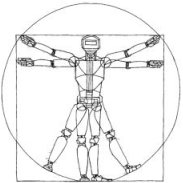Robotics: Science and Systems XV
Bayesian Estimator for Partial Trajectory Alignment
Przemyslaw A. Lasota, Julie A. ShahAbstract:
The problem of temporal alignment of time series is common across many fields of study. Within the domain of robotics, human motion trajectories are one type of time series that is often utilized for recognition and prediction of human intent. In these applications, online temporal alignment of partial trajectories to a full representative trajectory is of particular interest, as it is desirable to make accurate intent prediction decisions early in a motion in order to enable proactive robot behavior. This is a particularly difficult problem, however, due to the potential for overlapping trajectory regions and temporary stops, both of which can degrade the performance of existing alignment techniques. Furthermore, it is desirable to not only provide the most likely alignment but also characterize the uncertainty around it, which current methods are unable to accomplish. To address these difficulties and drawbacks, we present BEST-PTA, a framework that combines optimization, supervised learning, and unsupervised learning components in order to build a Bayesian model that outputs distributions over likely correspondence points based on observed partial trajectory data. Through an evaluation incorporating multiple datasets, we show that BEST-PTA outperforms previous alignment techniques; furthermore, we demonstrate that this improvement can significantly boost human motion prediction performance and discuss the implications of these results on improving the quality of human-robot interaction.
Bibtex:
@INPROCEEDINGS{Shah-RSS-19,
AUTHOR = {Przemyslaw A. Lasota AND Julie A. Shah},
TITLE = {Bayesian Estimator for Partial Trajectory Alignment},
BOOKTITLE = {Proceedings of Robotics: Science and Systems},
YEAR = {2019},
ADDRESS = {FreiburgimBreisgau, Germany},
MONTH = {June},
DOI = {10.15607/RSS.2019.XV.080}
}
